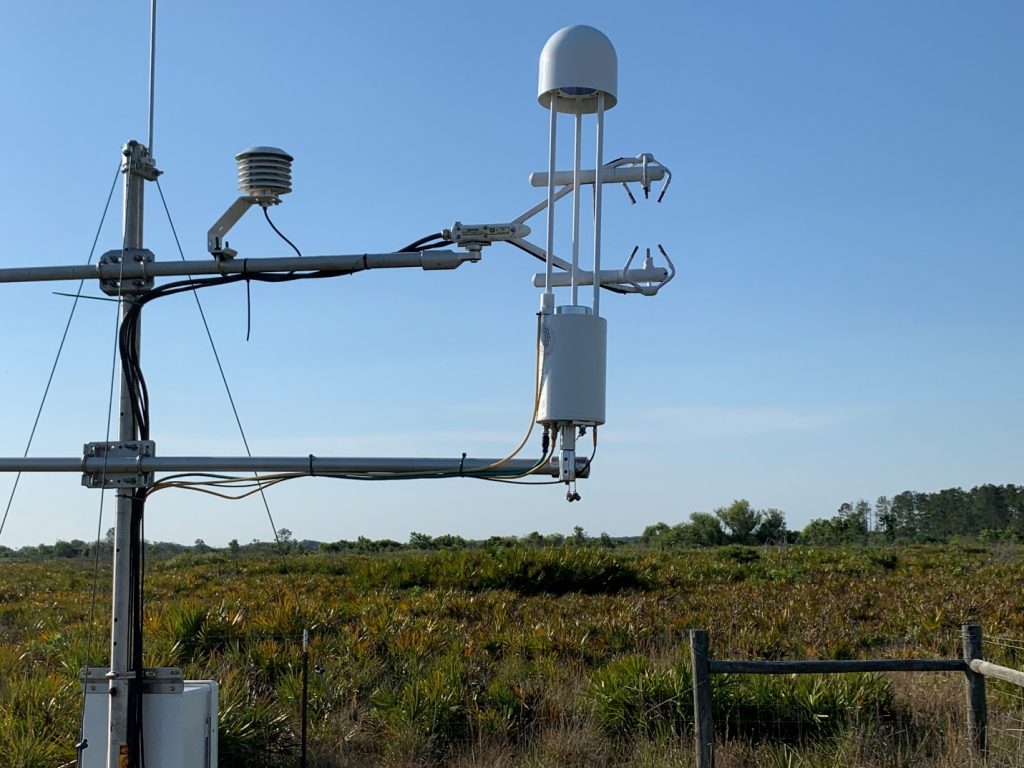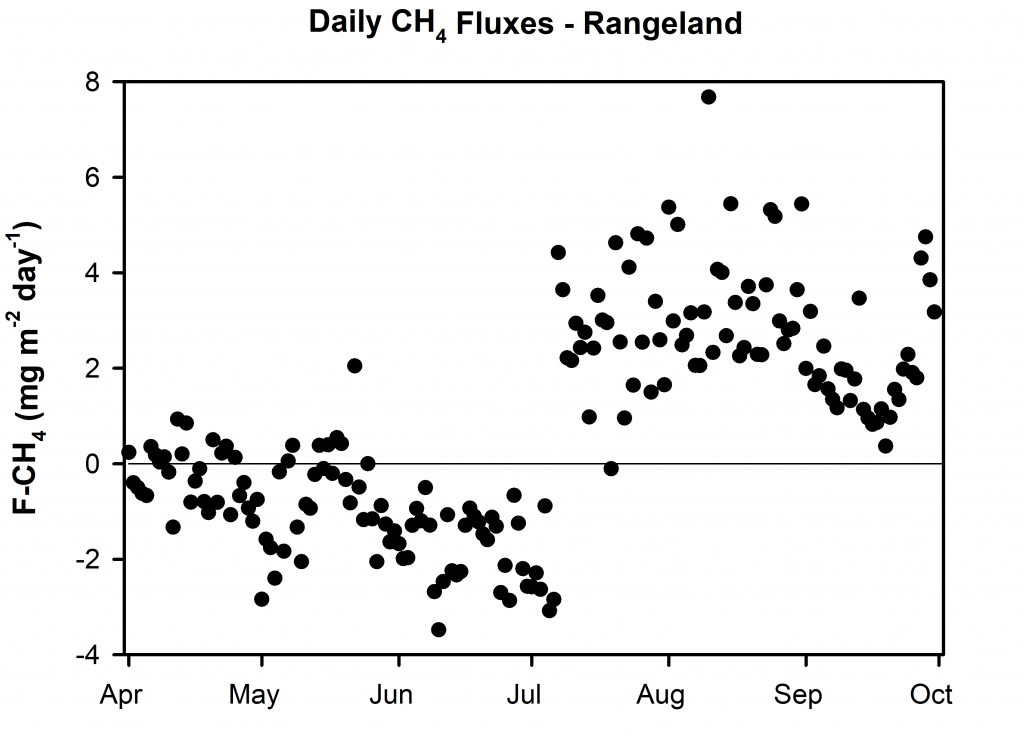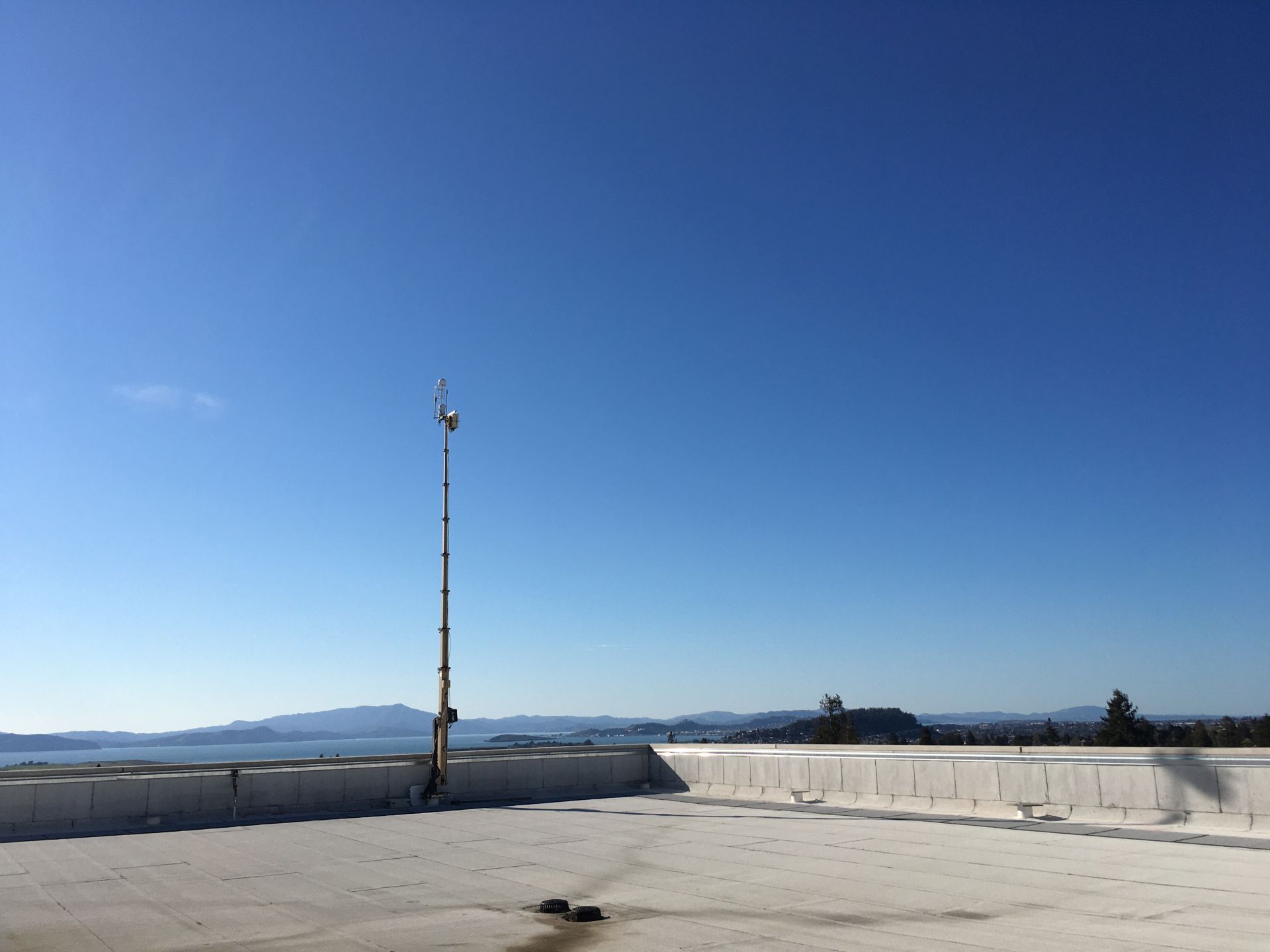Carbon dynamics and greenhouse fluxes in a Florida native rangeland.

US-ONA Eddy covariance sensors. Image credit Marta Moura Kohmann, Cattle Range Research and Education Center, Ona-Florida.
The Science:
Grazing lands, including both rangeland and pastureland, cover about 10.7 Mha in Southeastern United States; have a significant impact on the carbon balance in the region. Native rangelands in Florida extend over 3.1 Mha, and about 1.6 Mha of mostly non-forested areas cover from the center of the State to the Everglades, holding two-thirds of the State cattle. These rangelands provide many ecosystem services including food security, carbon sequestration, and climate change regulation. Florida’s rangelands are grazed by livestock and often managed using prescribed fire or mechanical shrubs control. This ecosystem is also subjected to a broad range of climatic variability, ranging from extreme droughts to very wet years where soils can be saturated with water for extended periods. Fire disturbs ecosystem functioning and carbon balance through direct release of carbon during ignition or indirectly by, reducing ecosystem uptake capacity, altering soil physical-chemical properties and soil greenhouse emissions, and overall ecosystem warming potential. Droughts often reduce ecosystem carbon uptake; however, extreme rainfall events typical experienced during the summer months can cause rangelands to shift from a methane (CH4) sink to a CH4 source. In addition, the presence of grazing animals also alters CH4 emissions due to enteric fermentation. How all these factors interact to affect Florida’s rangeland carbon balance and its warming potential is still unknown and a challenge to assess.
The impact:
Florida’s native rangelands are under pressure to satisfy multiple demands, such as to produce more food while providing ecosystem services. A comprehensive study elucidating the interaction of management – climatic fluctuations on carbon dynamics and warming potential for this ecosystem is lacking. Results from this study will help to fill up a gap on biosphere-atmosphere carbon dynamics and greenhouse balance in the region and will help to reduce uncertainties in carbon budget assessments at different spatial – temporal scales.
Summary:
This study has been conducted since 2016 in a native rangeland (US-ONA, https://ameriflux.lbl.gov/sites/siteinfo/US-ONA), using the eddy covariance approach to measure the turbulent exchange of carbon, water and energy between the rangeland and the atmosphere. CH4 measurements were incorporated in May 2021 using a LI-COR LI-7700 loaned by the AmeriFlux Management Project as part of the AmeriFlux Year of Methane (https://ameriflux.lbl.gov/year-of-methane/year-of-methane/). We recently purchased our own sensor that will allow for long-term monitoring of carbon and CH4 under management and climatic fluctuations.
Florida’s native rangeland can accumulate up to 100 Mg C ha-1 in the top 1m of soil (Xu et al., 2016). Our data demonstrated that this ecosystem is a carbon sink with a mean net uptake of 3.2 Mg C h-1 yr-1. Results from static chamber measurements indicate that native rangelands are a CH4 sink during the dry winter – spring period and a CH4 source during the wet summer season (Bracho et al., 2021). These results are consistent with preliminary eddy covariance data (Fig. 1). The recent addition of a new co-located Ameriflux site (US-PAS, https://ameriflux.lbl.gov/sites/siteinfo/US-PAS) will help us expand our original research question to pasturelands in Florida. Our goal is to evaluate the impact of management on ecosystem carbon balances and warming potential of Florida native and cultivated grazing lands.

Fig 1. Daily CH4 fluxes (mg m-2 d-1) for a Florida’s native rangeland from April to September 2021.
Contacts:
| María Lucia Silveira, Professor. Range Cattle Research and Education Center 3401 Experiment Station Ona, FL 33865 |
Rosvel Bracho Assistant Research Scientist School of Forest, Fisheries, and Geomatics Sciences. University of Florida Gainesville, FL 32611. |
Funding:
Long-Term Agroecosystem Research (LTAR network)/USDA. Award number AWD2909.
Publications:
Bracho, R., Silveira, M.L., Boughton, R., Sanchez, J.M.D., Kohmann, M.M., Brandani, C.B. and Celis, G., 2021. Carbon dynamics and soil greenhouse fluxes in a Florida’s native rangeland before and after fire. Agricultural and Forest Meteorology, 311.
Xu, S.T., Silveira, M.L., Inglett, K.S., Sollenberger, L.E., Gerber, S., 2016. Effect of land-use conversion on ecosystem C stock and distribution in subtropical grazing lands. Plant Soil 399 (1-2), 233–245.




No Comments
Be the first to start a conversation